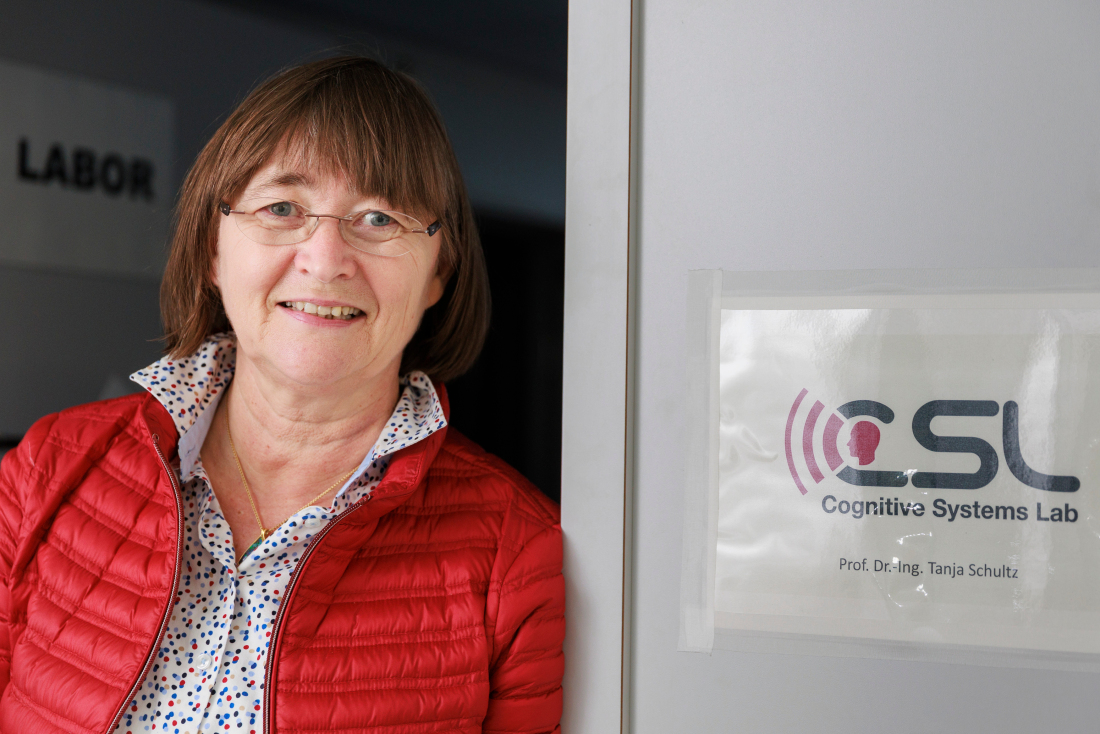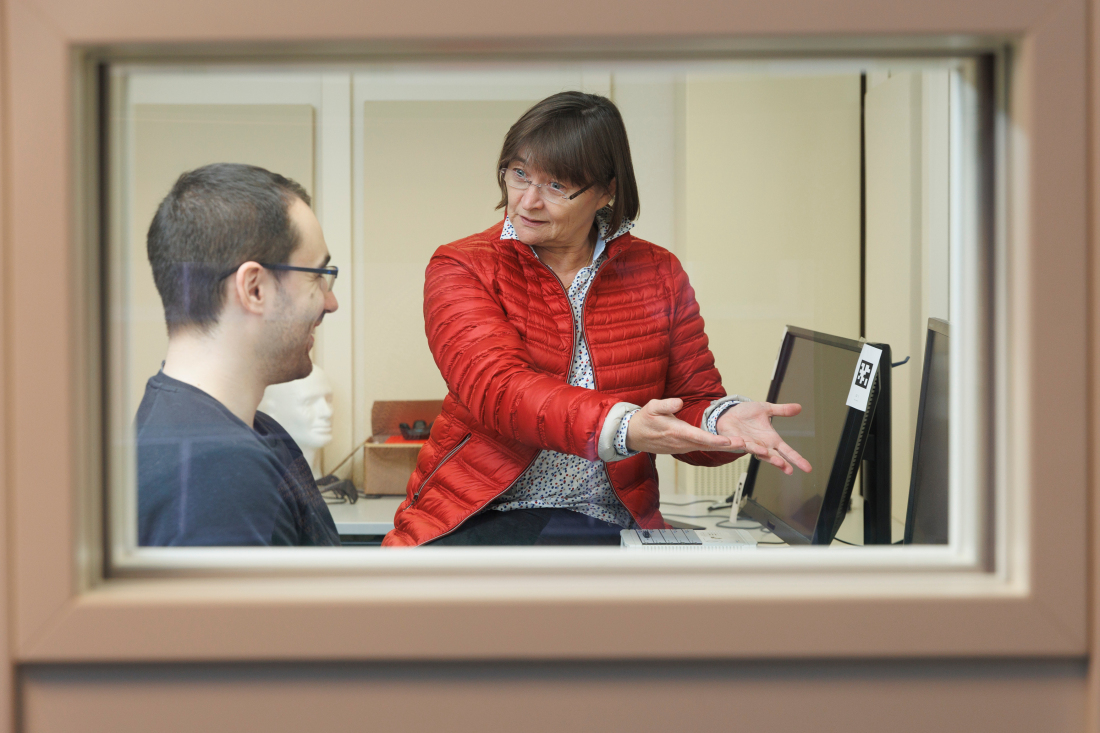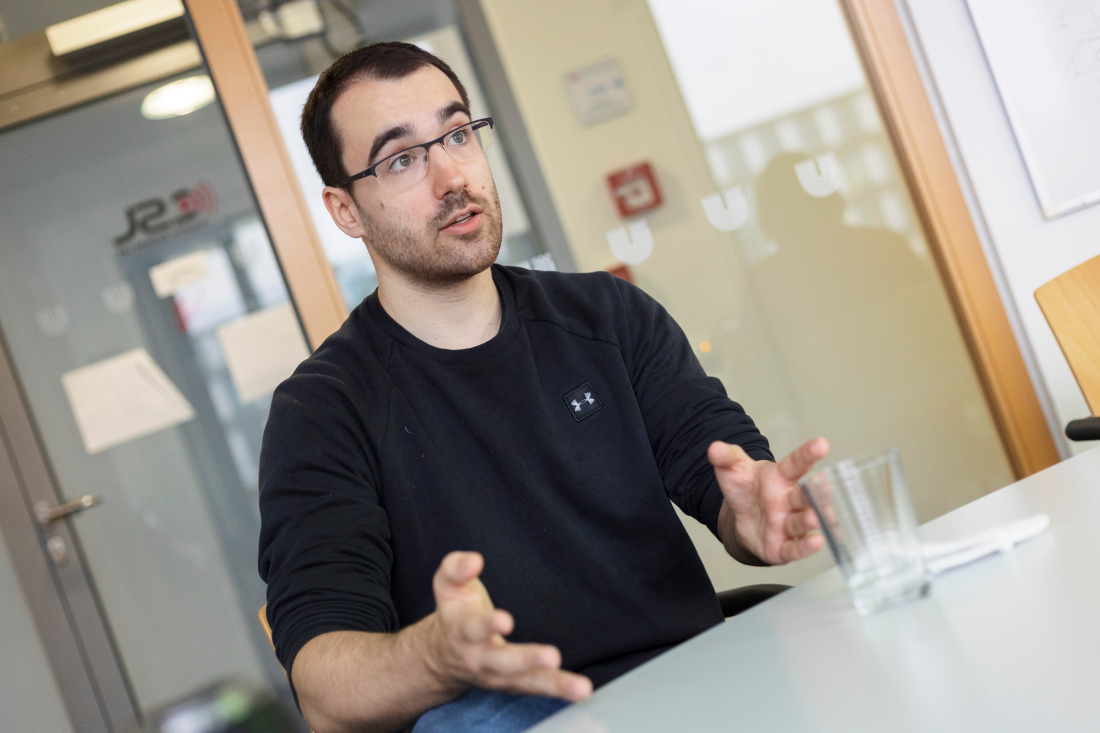When Thoughts become Spoken Words
Investing in BremenSpeech neuroprosthetics can make the words you think audible

Some people lose their speech capacity because of an illness that makes them lose control over their muscles. There is now hope for those affected by this: a team at the University of Bremen has succeeded in transforming the brain's signals that are involved in imagining words into sounds that can be heard via loudspeaker.
Many people still remember the renowned English astrophysicist Stephen Hawking sitting in his wheelchair and using a computer with a voice synthesiser to communicate with the surrounding world. Hawking was diagnosed with motor neurone disease as a young man, and when he died in 2018, he had been unable to speak unaided for 33 years. In his latter years, he could only control the voice synthesiser by twitching the muscles in his cheeks: a slow and extremely laborious process. It is people like him, who suffer from neuromuscular diseases, who will enjoy a notable improvement in their quality of life in the future, thanks to the speech neuroprosthetics developed at the University of Bremen. "The aim of our system is to make it possible for these people to hold conversations naturally", says Tanja Schultz, Head of the Cognitive System Lab (CSL).
"Groundbreaking research success"
The first major step along this route has already been taken – it's a "groundbreaking research success", states the 57-year-old Computing Science Professor emphatically. "We've made it possible for our test subjects to hear themselves speak, although they only imagine the words". The paper on this topic, which is soon to be published in an internationally renowned scientific journal, is based on a study involving a patient suffering from epilepsy, and who had had deep electrodes implanted in her brains for medical investigations. "When people speak, the impulse for the speech itself comes from the brain", explains Miguel Angrick, lead study author. "The implanted electrodes enable us to represent these processes by recording the corresponding brain signals.
International cooperation
As part of his PhD thesis, the now-graduated 30-year-old developed an algorithm that converted these language-specific neural processes directly into audible speech. To achieve this, the 25 participants were first asked to read a text out loud. The members of the international project team, which also includes researchers from Virginia Commonwealth University in the USA and the University of Maastricht in the Netherlands, then recorded the resulting acoustic signals together with the brain signals on which they were based. Afterwards, the Bremen computer science specialists brought these two sets of signals together, enabling them to identify the specific neural activity on which each sound was based.

A scarce pool of data
However, implanting electrodes in human beings purely for research purposes is prohibited, making the development of effective speech neuroprosthetics more difficult. "This is why our research is based on data that would have to be collected for medical purposes", stated Schultz, Head of CSL, to clarify matters. "We work together with people who suffer from severe epileptic seizures. When the electrodes are placed in their brain, they are placed in the areas that the neurosurgeons suspect are the source of their problems, and not where we'd like them to be for our work". In the case of the patient mentioned above, whose data the researchers were able to use for their current study, these two factors converged extremely successfully: in this patient's case, the electrodes covered the parts of the brain that are especially important for the generation of speech.
Similar processes for audible and imagined speech
As part of the study, this patient first read texts out loud. The system then used a machine-learning process to identify and learn how the spoken words corresponded to neural activity. "In the second step, this learning process was repeated, first with whispered speech and then with imagined speech", reported Angrick. "For the very first time, this enabled our system to generate synthesised speech in real time, and without a discernible delay. In other words, an audible signal that was based on another signal." Although the system was able to learn the interrelationships using exclusively audible speech, it was also able to output audible sounds for whispered and imagined speech: "This brings us to conclude that the fundamental processes in the brain for audible and imagined speech are comparable."
The aim is not to create a mind-reading machine
The important issue for the researchers is the conclusion that their speech neuroprosthetics should only output the words that the patient actually wants to say. "When fleeting thoughts rush through the brain, we don't assume that these are planned and articulated, and that's also not something we can get to grips with using our approach", stated Tanja Schultz in clarification. "And that's also not something we want to do." added Miguel Angrick: "Building a mind-reading machine isn't our goal. We're creating a prosthesis, and that's something people will have to learn how to use."

Testing continues
According to Schultz, Head of CSL, the current study is a huge developmental leap forward, although there is still a long way to go. "The output quality isn't quite as convincing as we'd like. I'd still like to try out a couple more algorithms to improve the way speech is synthesised." In addition, Schultz and her team want to prove that, with some training, prosthetic device users will be able to improve the audio quality themselves.
In the meantime, former PhD student Miguel Angrick has just signed a contract with the prestigious Johns Hopkins University in the USA. He will soon start working there for a research project with "locked-in patients" whose almost total paralysis means that they can no longer speak. His former boss is optimistic: "I'm sure that the research group there will be able to implant the first speech neuroprosthetic device in the first patients fairly soon", says Tanja Schultz. "I estimate that this should happen in the next three to five years."
Success Stories
Bremen’s Economy in Figures: Statistics 2025
The State of Bremen is a strong economic hub. A look at the latest statistics highlights its economic strength — summarising key data such as cargo volumes, export performance, industry turnover, and more.
Learn moreMedium-Sized Companies in Bremen Showcasing the Full Range of the Local Economy
Medium-sized companies form the backbone of Bremen’s economy. They create jobs and produce goods that are in demand worldwide. Here is a selection of ten businesses that illustrate the diversity of Bremen’s economic landscape.
Learn moreTwelve international food and beverage companies in Bremen
Becks and Melitta may be high-profile brands, but international food and beverage companies also manufacture lots of other products in Bremen and Bremerhaven. Here are twelve examples.
Learn more
